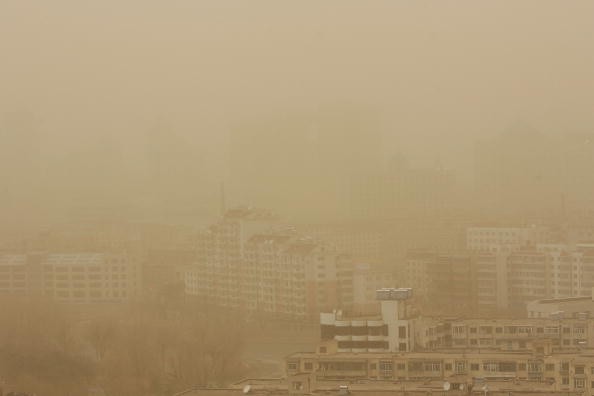A massive Saharan dust storm heading toward the Americas has been recorded on satellite.

According to NASA Earth Observatory experts, strong winds blasted over Mali and Mauritania earlier this month, blowing desert dust over Senegal and The Gambia and into the Atlantic.
One Year After Being Photographed
The dust cloud was detected traveling over the central Atlantic area by the NASA-NOAA Suomi NPP satellite on 4 June. By 7 June, it had been observed by the NASA-NOAA Suomi NPP satellite.
This storm arrives a year after NASA satellites photographed the greatest dust storm in 20 years, which swept across the Caribbean Sea in June 2020.
Satellite and ground sensors recorded the greatest dust concentration in the atmosphere since NASA's Earth Observing System satellites were launched during that storm.
Scientists recently released their findings on the "Godzilla" storm, explaining how the dust travels such a great distance.
Travelling Distance

In a NASA release, research lead author Bing Pu, a geologist and atmospheric scientist at the University of Kansas stated, "The African easterly jet (stream) transfers the dust from Africa into the Atlantic area."
The North Atlantic subtropical high, a high-pressure system that sits over the subtropical North Atlantic, can then transfer it farther into the Caribbean.
The Caribbean low-level jet, in conjunction with the subtropical high, has the potential to transfer dust from the Caribbean area to the United States.
It's uncertain how future dust storms may be affected by climate change.
According to Bing Pu's team, storms may become more common as temperatures rise and less vegetation holds Earth's soil on the ground.
Godzilla Storm
In June 2020, a "Godzilla" dust storm traveled over the Atlantic Ocean from the Sahara, the world's biggest and hottest desert, reaching North America. Dust uplift from low-level jets and haboobs causes Saharan dust plumes, which are a natural occurrence, especially during the summer. However, because of its gigantic size and volume of dust transport, this event was dubbed "Godzilla" dust plume - the most intense occurrence in the last two decades.
Godzilla's storm was absolutely monstrous. First, the harmattan, or desert winds, broke records by blowing at over 70 kilometers per hour in northern Africa. Then, across the Atlantic Ocean, a cloud of pink-tinged dust roughly the size of the entire United States drifted westward. According to Hongbin Yu, an atmospheric scientist at NASA's Goddard Space Flight Center, it weighed over 24 million tons, enough to fill hundreds of Olympic-size swimming pools.
Sahara Dust

Saharan dust falls into the water as it travels across the Atlantic, nourishing marine life and, similarly, plant life once it arrives on land. Minerals in the dust, such as iron and phosphorus, function as fertilizer for the Amazon rainforest, the world's most extensive and most biodiverse tropical forest, whose rains would otherwise wash away many of these vital nutrients into the Amazon river basin.
For more environmental news, don't forget to follow Nature World News!
© 2026 NatureWorldNews.com All rights reserved. Do not reproduce without permission.





